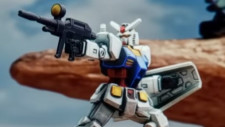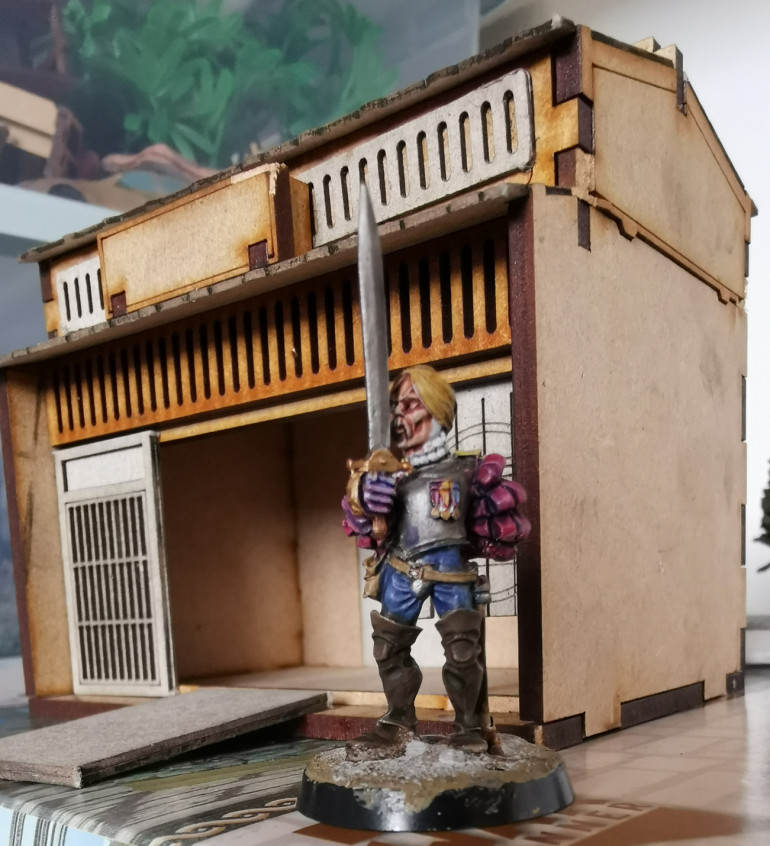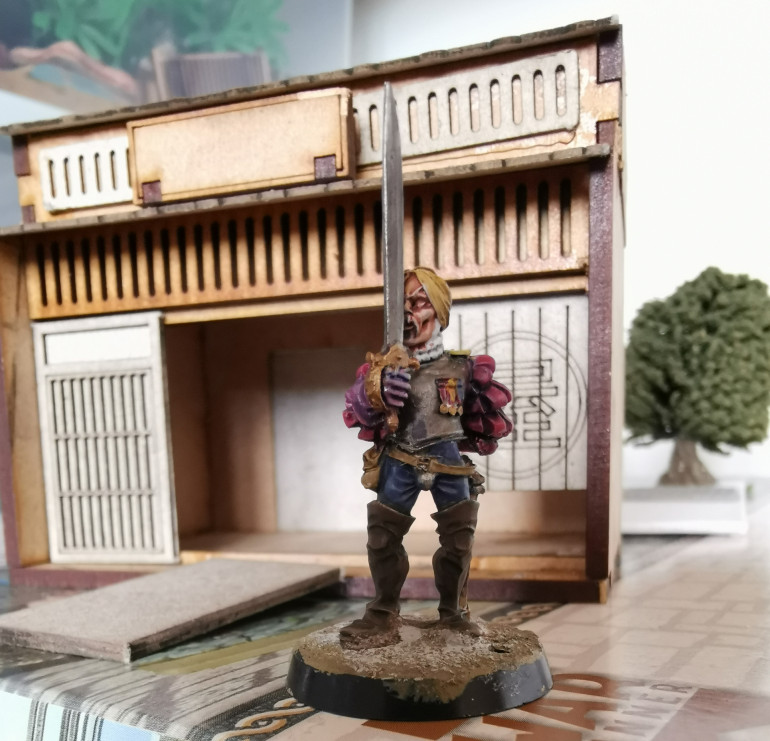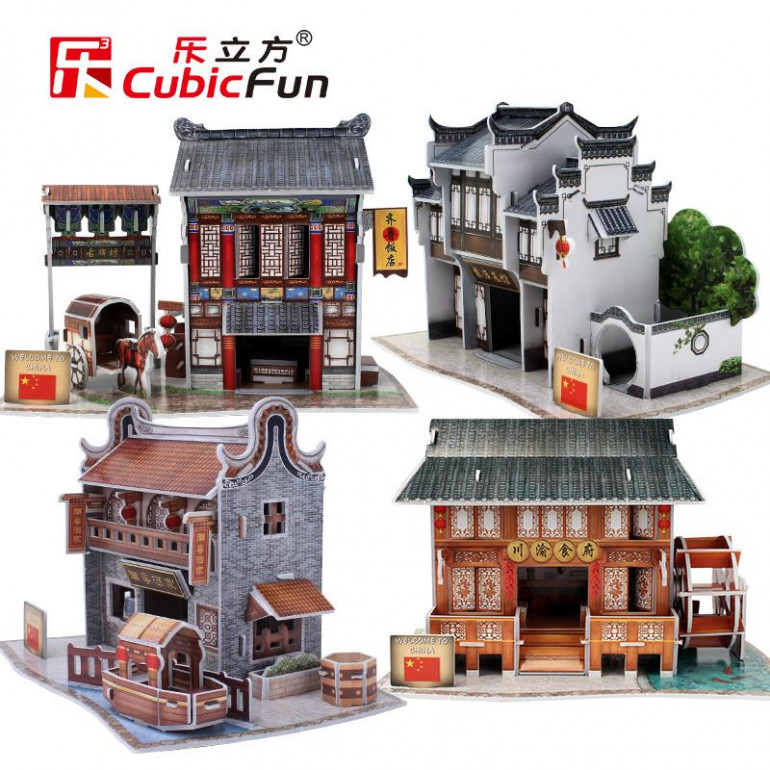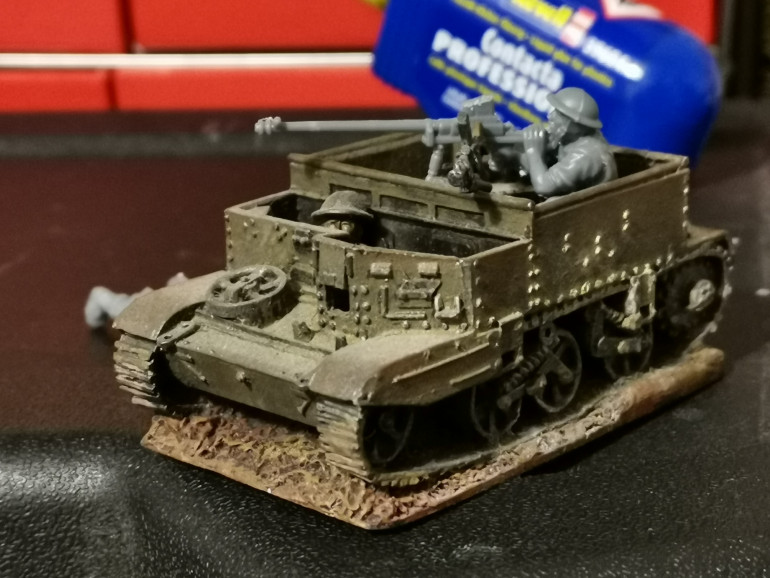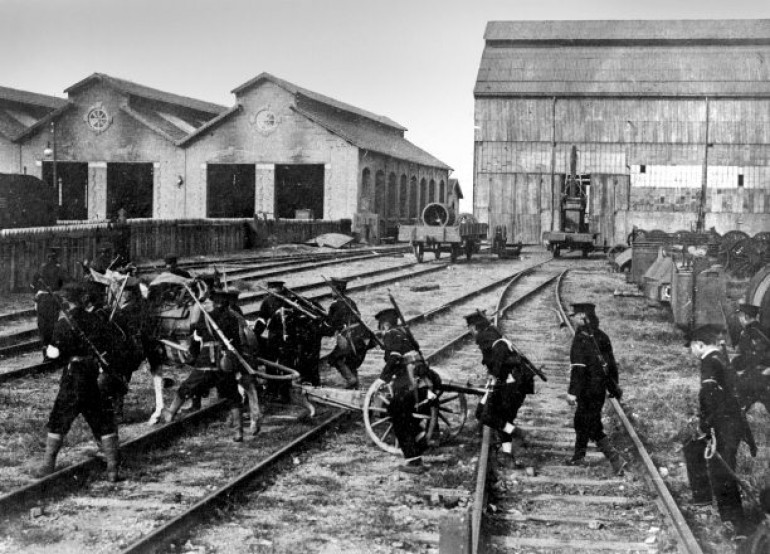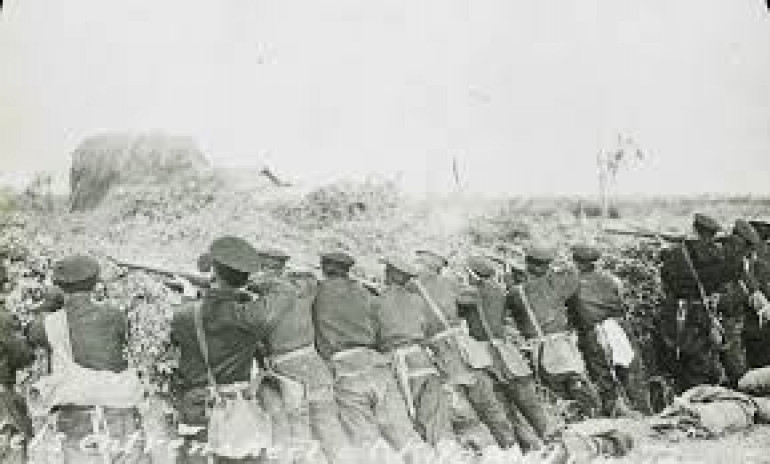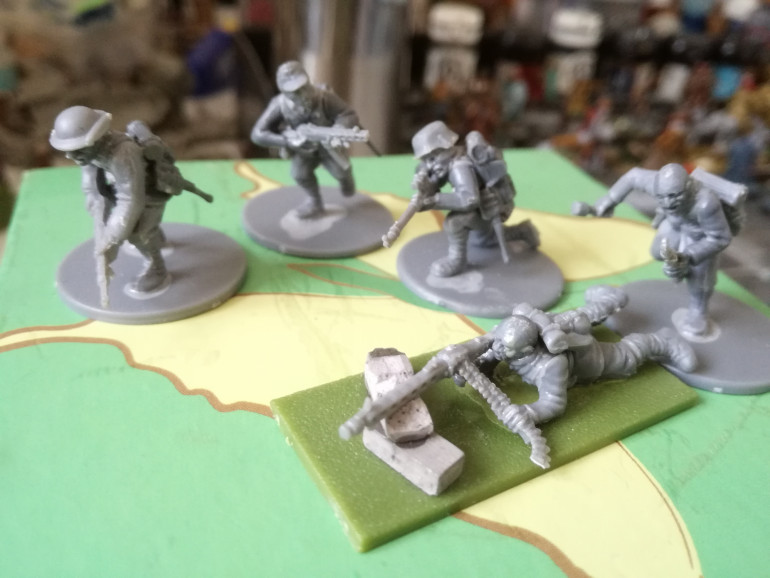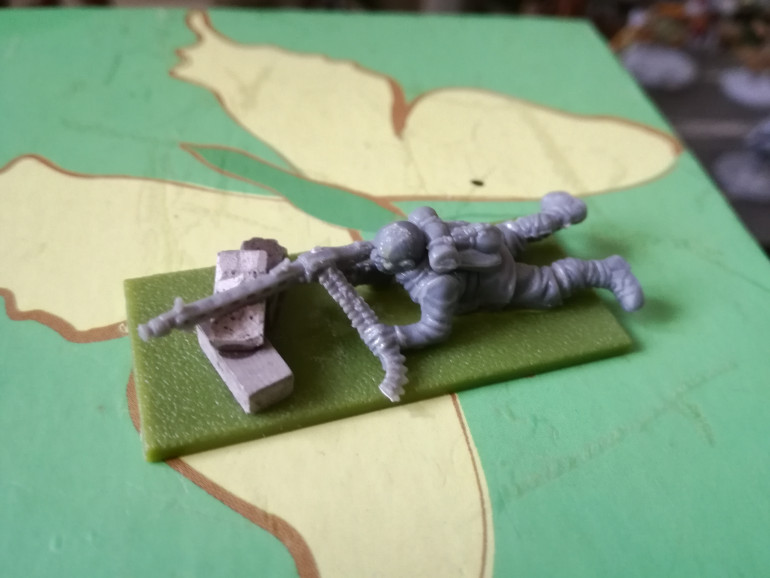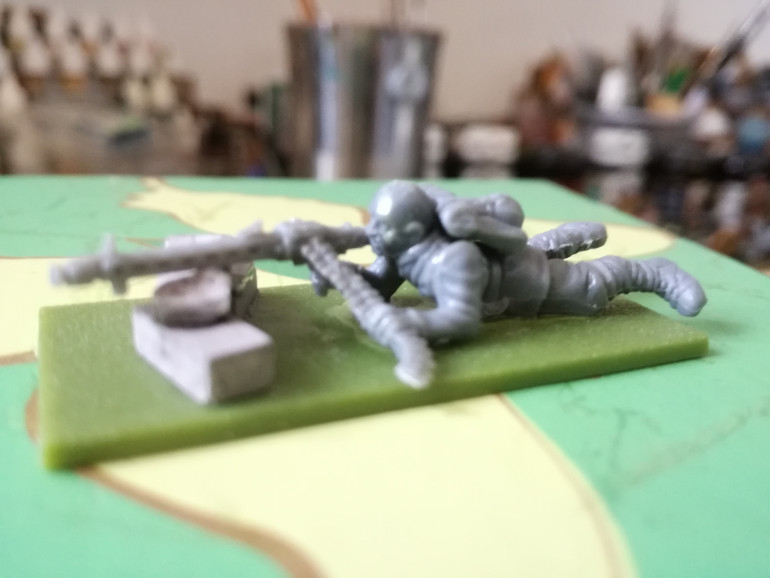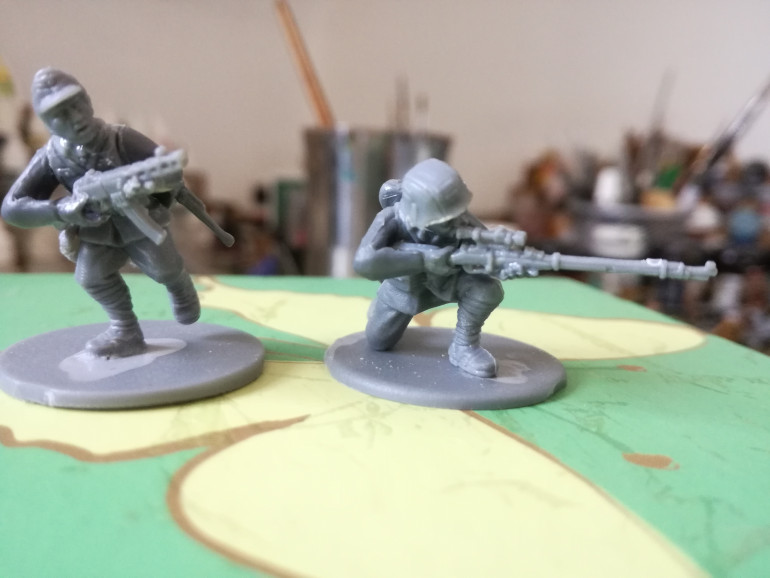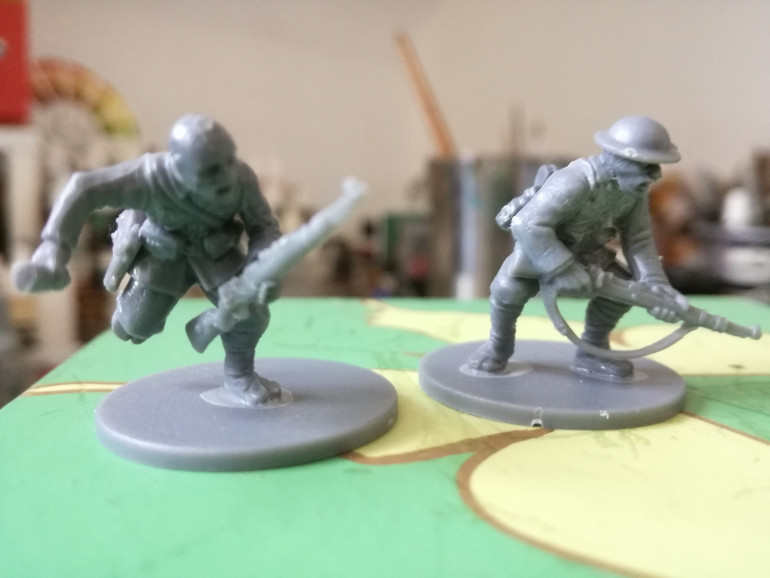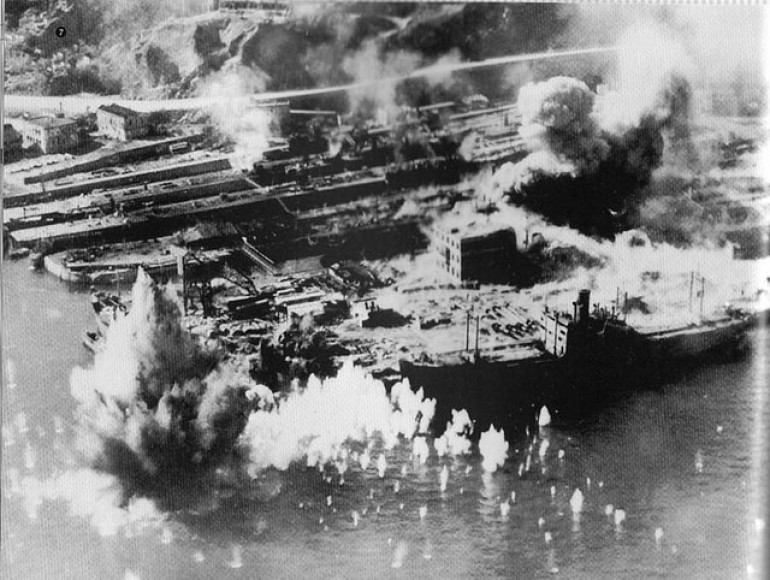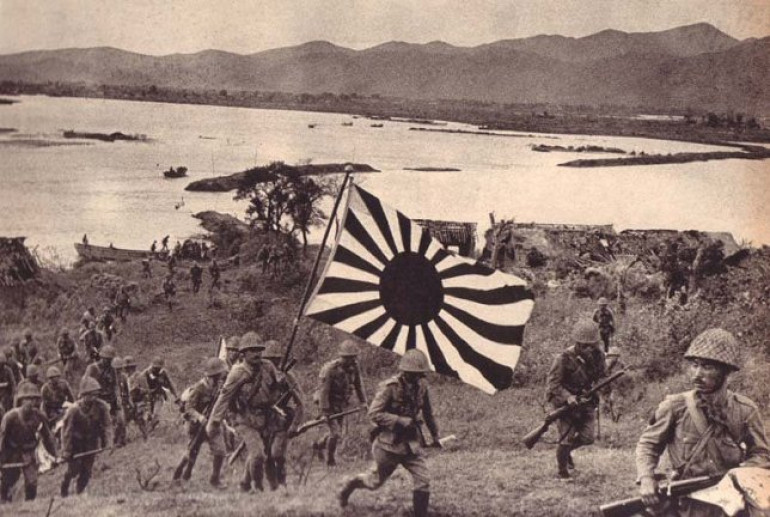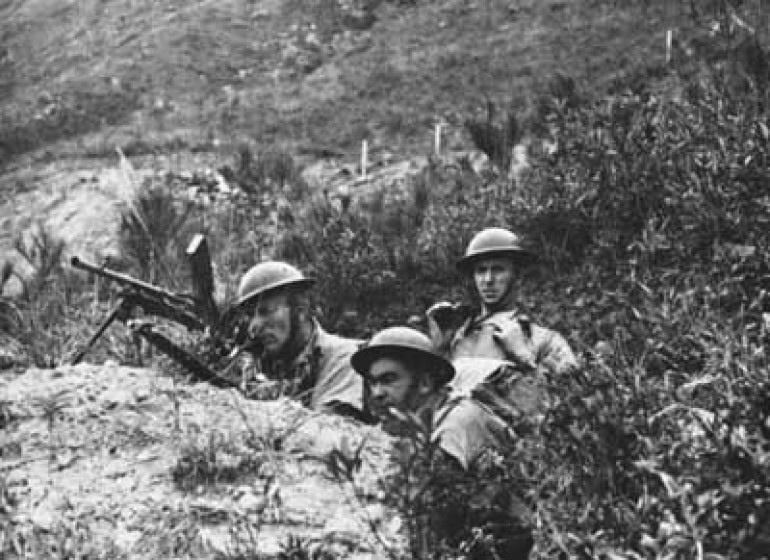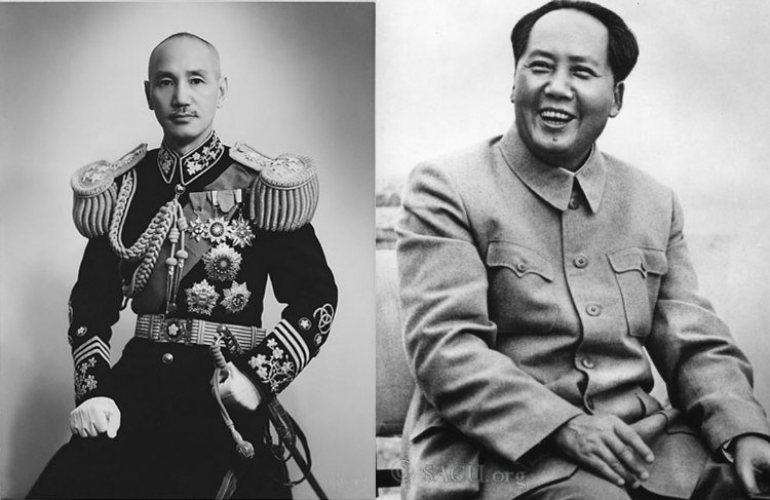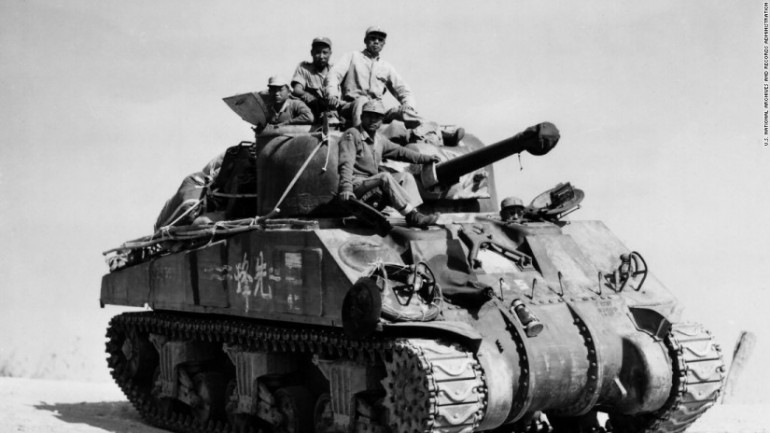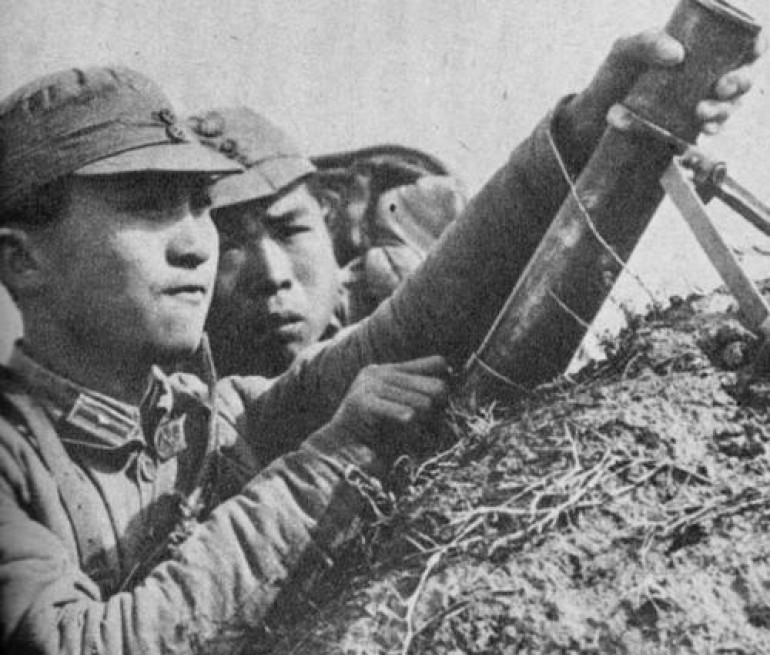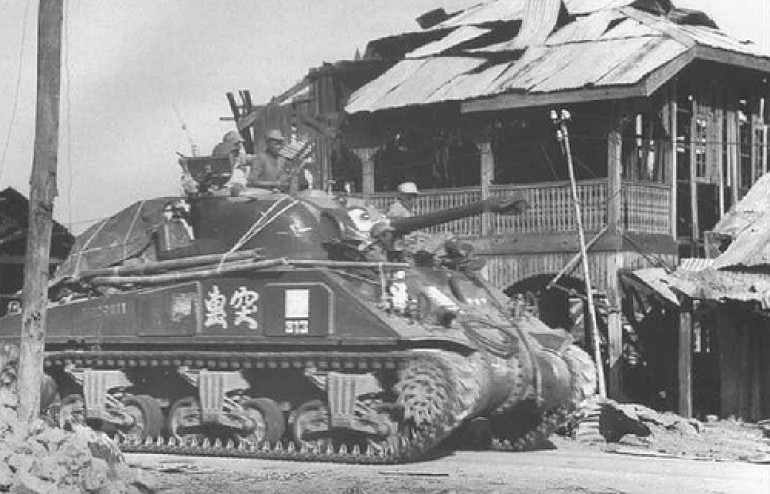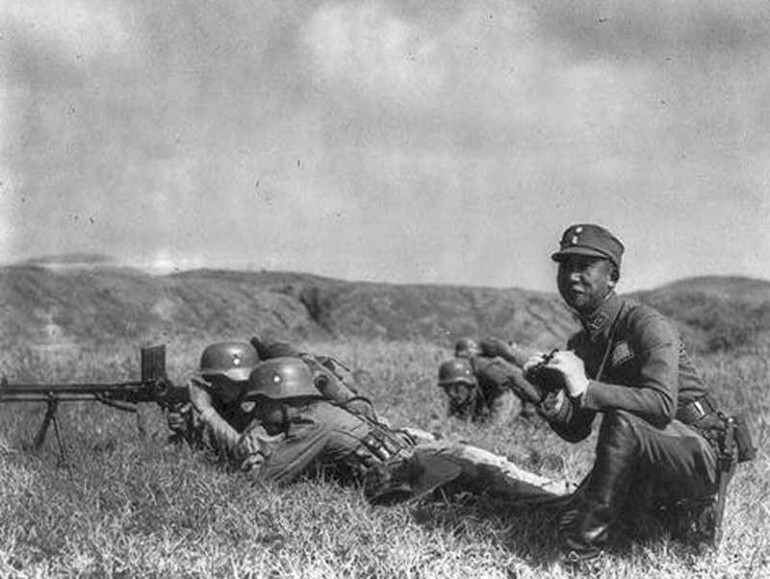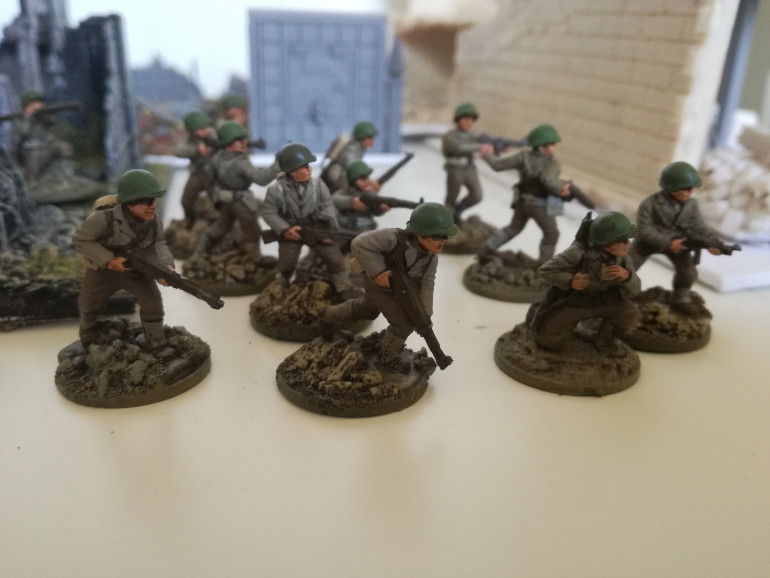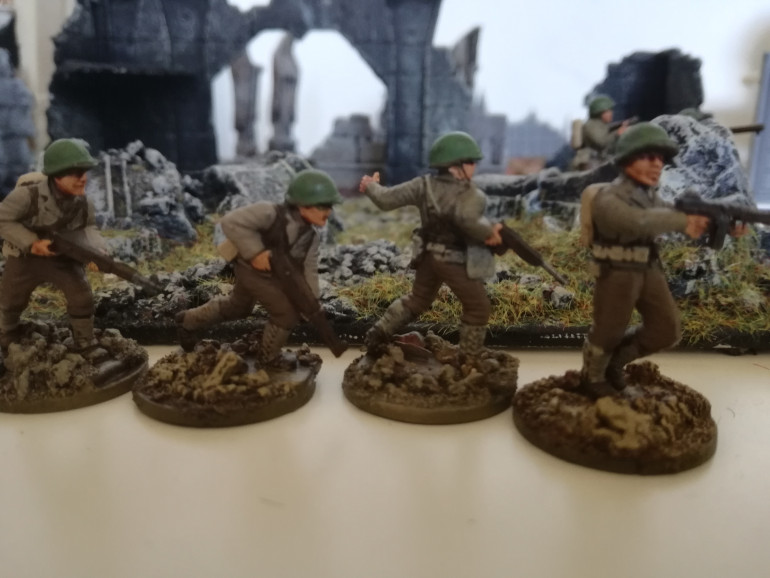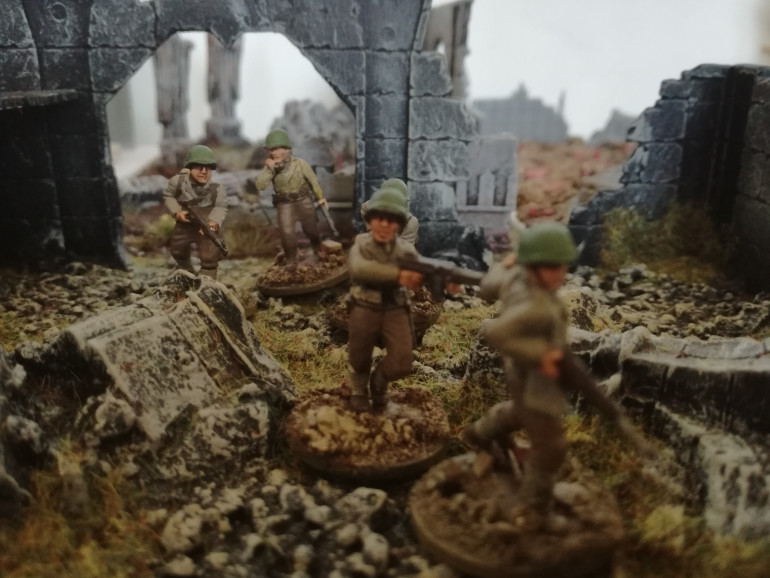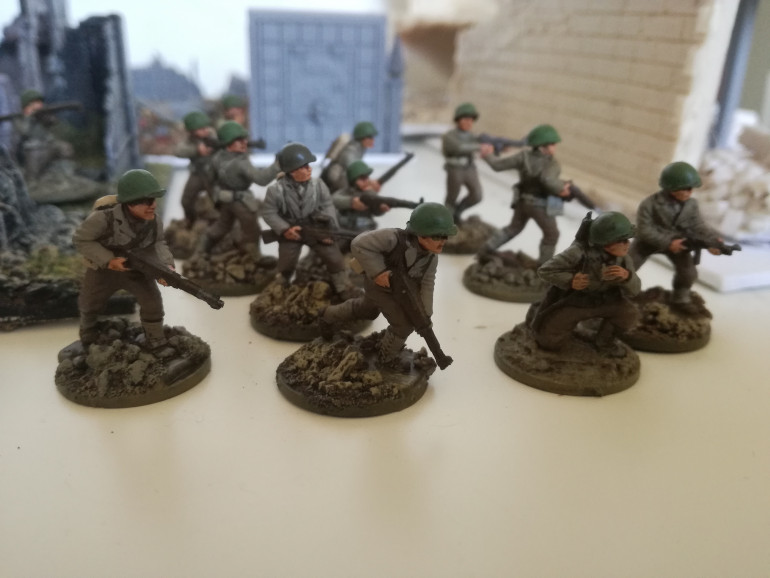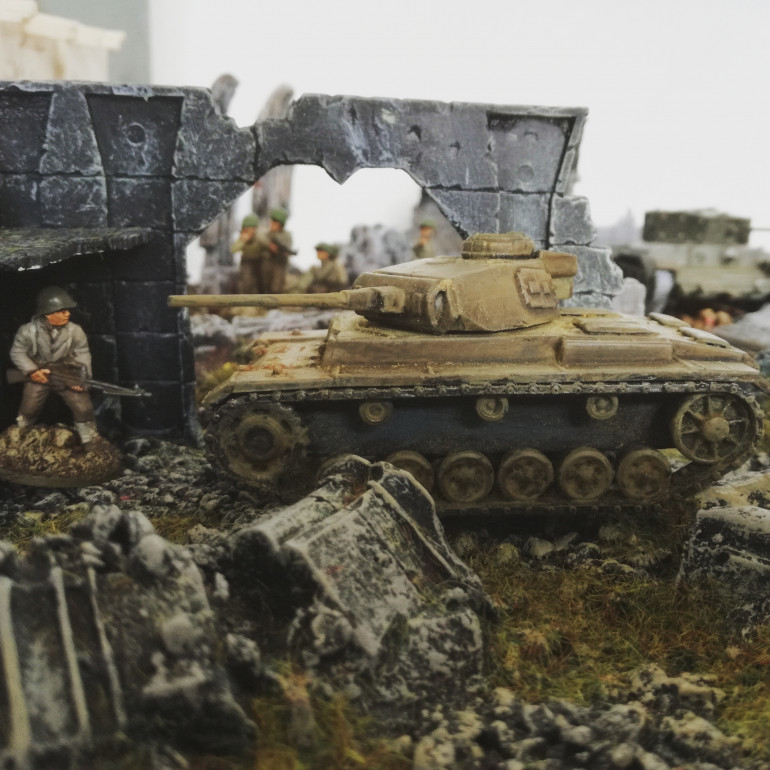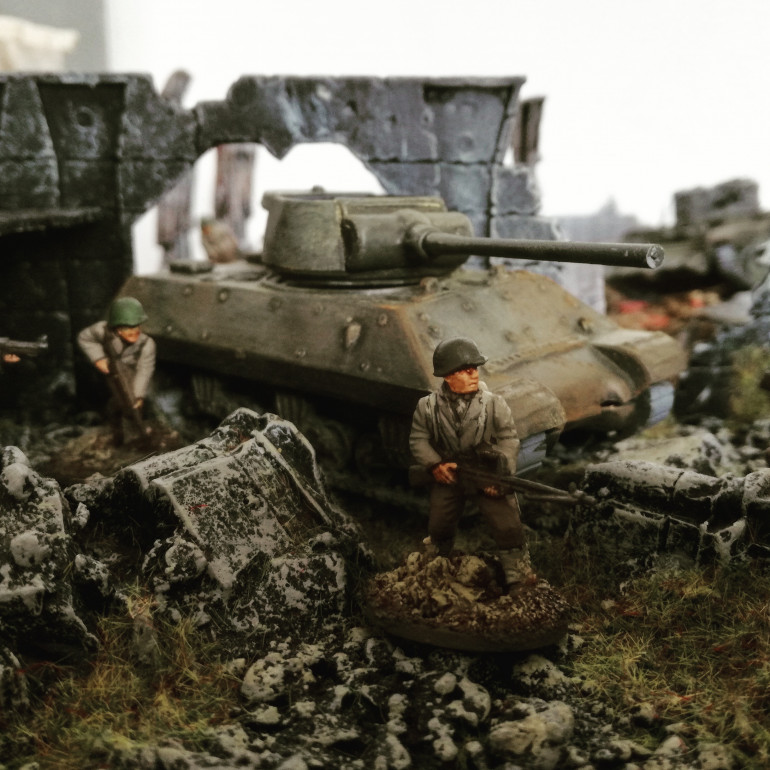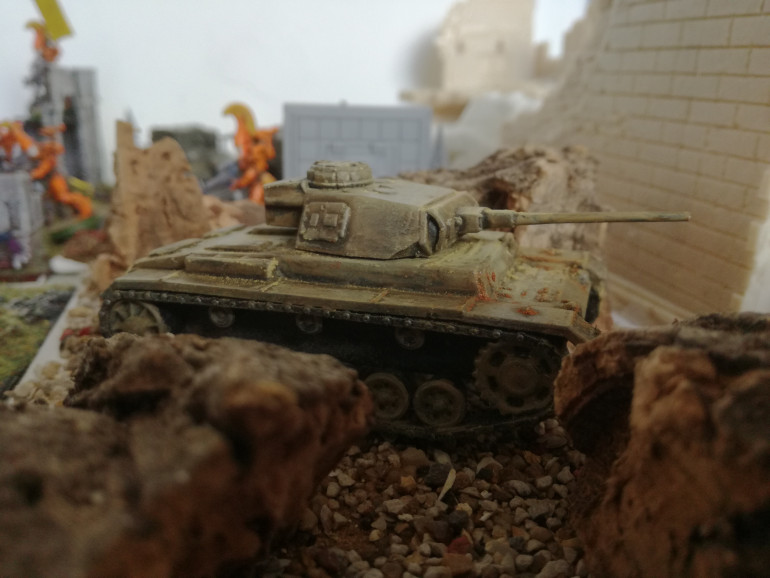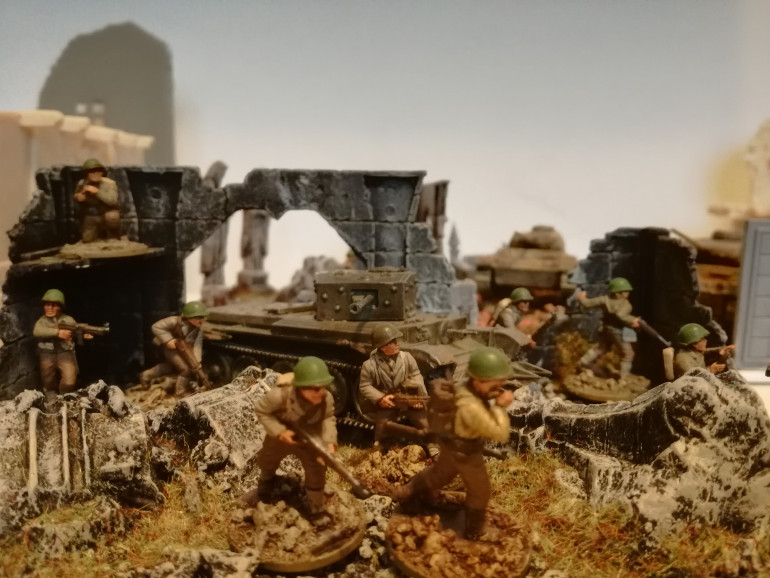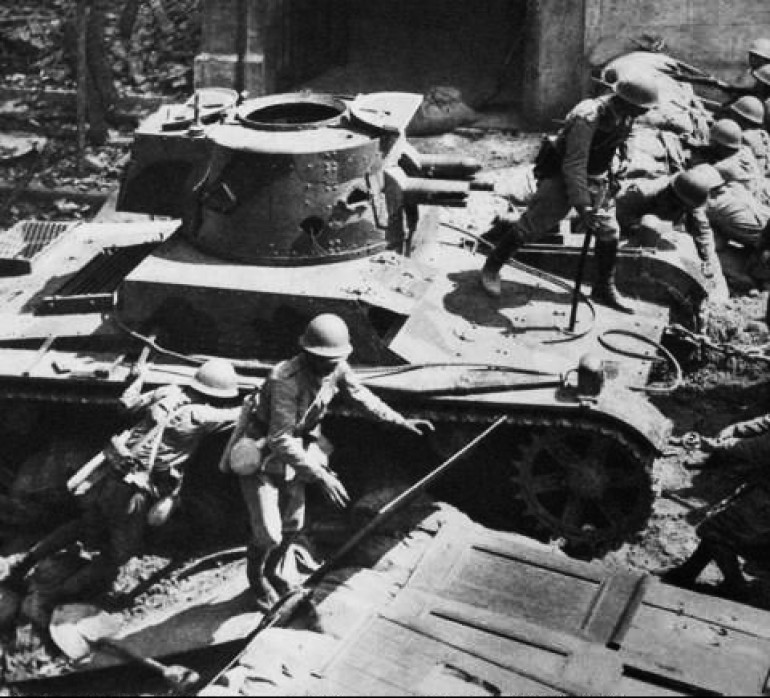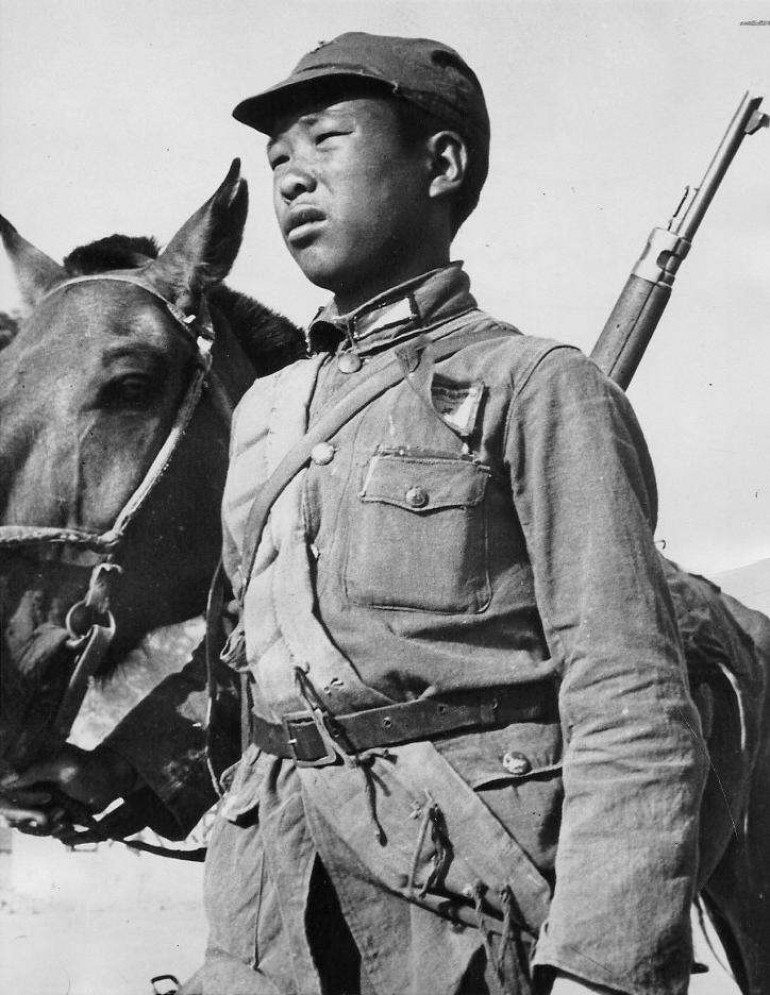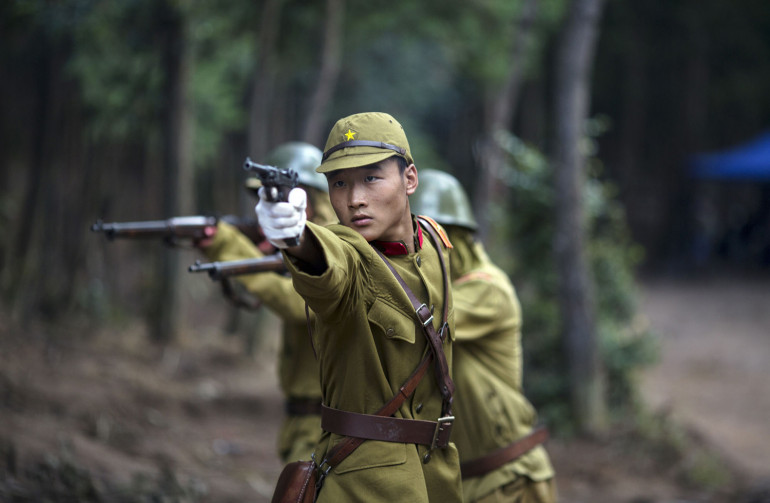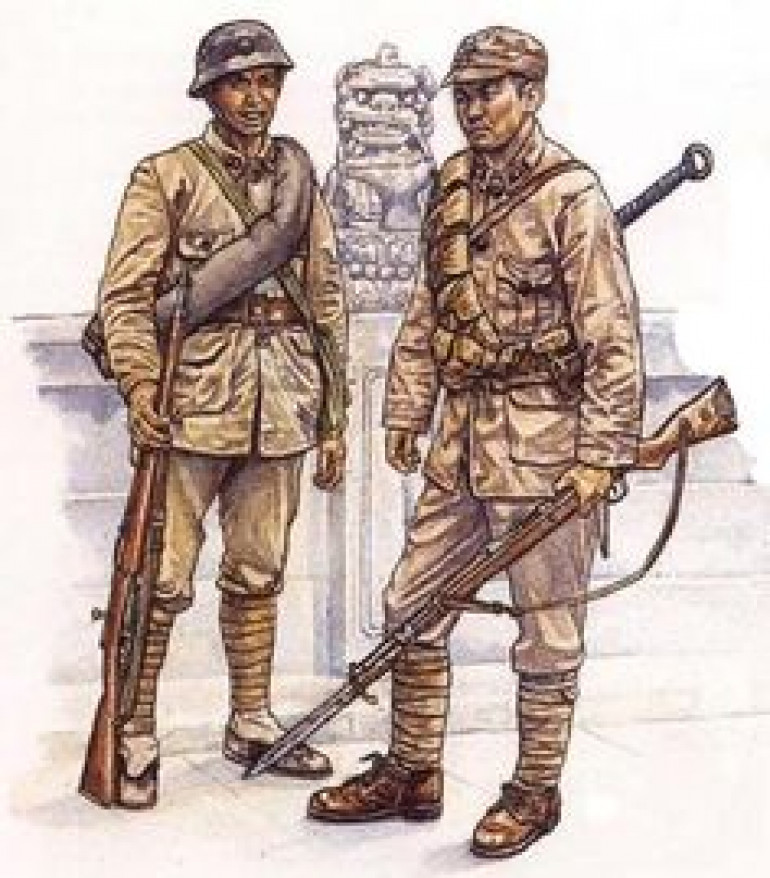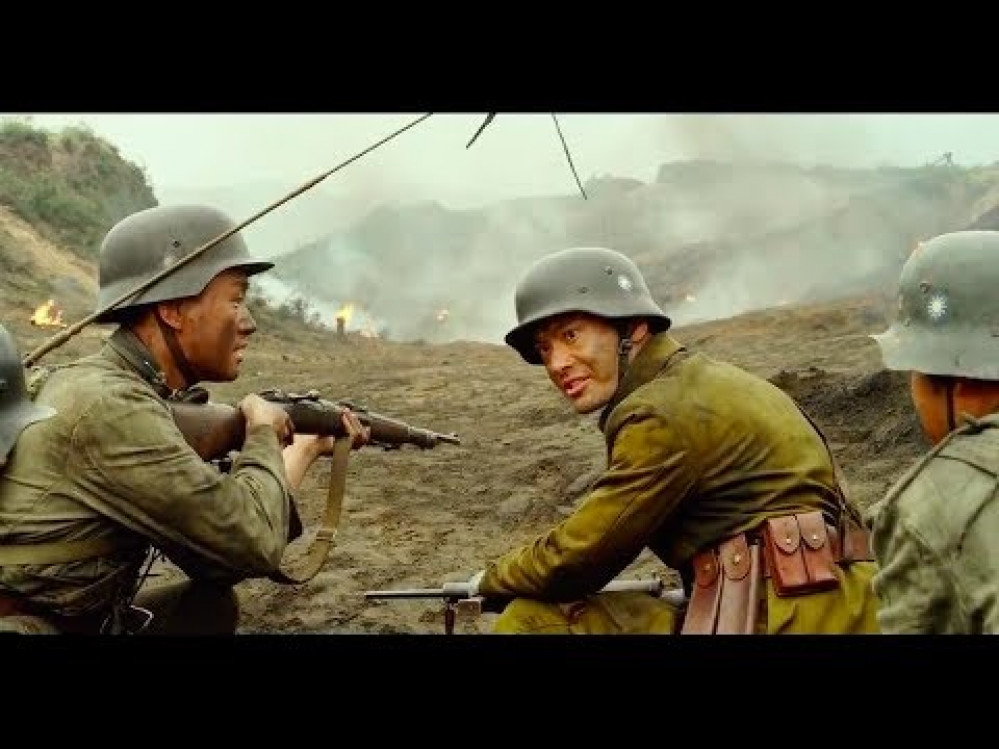
Bolt Action Germans, Allies and Chinese Armies
Recommendations: 248
About the Project
I'm building three armies for Bolt Action. The Germans will be a combination of Europe and Western Desert theatre's of operation. The allies will be mixture of British and US troops which will be used for Late WW2 both European and Pacific, as well as the Korean Conflict. The Chinese will be late war Nationalists and Communist forces. The Communists will double up as a Korean War army, like wise the Allies will as well. Long term I plan to game in WW2, Chinese Civil War and the Korean Conflict. This project blog will include my efforts at building and painting the armies, as well as my research into the period and book reviews.
Related Game: Bolt Action
Related Genre: Historical
Related Contest: Bolt Action: Western Desert Boot Camp
This Project is Active
Started building Asian terrain
I’ve started picking up various Asian buildings in MDF for gaming in the Pacific and Asia. The first one I decided to build was the Machimya Shop building from TT Combat. Ignore the fantasy miniature in front of the building.
I also have some card buildings from China which are 20-25mm so I plan to use them as a template and scale them up to 28mm. The plan is to build them in foam board as well as using various building materials such as balsa wood.
Quick Up Date
This is just a quick update as I’ve been distracted by other projects such as starting Team Yankee. So far I have a completed Bren Gun Carrier for the British, and I plan to add a anti-tank element to the carrier, but the gunner will need painting.
China 1911
I wrote this article originally for Irregular Magazine, it gives some background to China prior to the war. The events that occurred between 1911-1912 allowed the rise of the Warlords between the first and second world wars. I plan to write another article covering the Warlord period, these show why China was completely unprepared for war with Japan due to the chaos in the country.
In the autumn of 1911 saw some of the biggest changes politically in China’s history. For the last 247 years China was ruled by the Qing dynasty. With failures to modernize China the people were becoming unhappy with Imperial rule and their ability to protect China from foreign powers. Several political anti-Qing groups with the purpose of creating change within the country sprang up all over China. Most of these also had support outside of China from Chinese communities living abroad, some of whom were in exile.
Prior to 1911 there had been several attempts by particular groups to rise up and over throw the Qing rulers, all of which had failed. Then on April 27th an uprising occurred in Guangzhou, known as the Yellow Flower Mound Revolt.
Huang Xing and approximately 100 armed revolutionary supporters forced their way into the Viceroy of Guangdong and Guangxi residence. Initally they were successful, but the Viceroy was reinforced with Qing government soldiers. These additional soldiers turned the tide in the Viceroy’s favour, the uprising suddenly turned into a disaster with only a few of the revolutionary members escaping, including Huang Xing, though he has injured. In the aftermath 86 bodies were found though only 72 could be identified, most of whom were young men.
One of those killed was a leading member of the revolution Lin Jie-min who on the eve of the uprising wrote a piece entitled A letter to my wife, which is widely considered a master piece in Chinese modern literature.
Wuchang Uprising
In October later that year, the Qing government nationalised the railways, which had been built by private investors. This led to what has been called Wuchung Uprising, what made this one successful was the support from local military.
On October 9th at the Russian Concession in Hankou Revolutionaries were planning an attack, whilst bombs were being prepared for this attack an accident occurred caused by an explosion. Sun Wu a local leader of the political group Progressive Association was injured along with several others. Those who were injured were taken to a local hospital for treatment and the staff suspecting something informed the local Qing government.
Members of the New Army garrisoned in the city of Wuchung led a coup against the local authorities on October 10th. The local Viceroy of Huyuang Duan Zheng is tasked with tracking down the revolutionaries. In response to this Jiang Yiwu and the Literary Society launched an attack, but Qing agents are made aware of the attack resulting in several members being arrested and executed. On the evening of October 10th, the New Army in WuChung stage a mutiny, this allows revolutionaries to take control of the Viceroy’s Government house/office. Duan Zheng managed to escape via a tunnel during the attack. Fierce fighting continued during the night for control of the city, with troops fighting street to street. The mutinied soldiers manage to capture key strategic places within the city leading to the defeat of government troops.
Battle of Yangxia
The battle of Yangxia was the largest military engagement of the 1911 revolution, lasting from October 18th to December 1st, a total of 43 days. The battle was waged in Hankou, Hangyang and Wuchang in Central China. The revolutionary army were outnumbered and out gunned throughout the battle, they fought defiantly in the face of greater odds.
On October 18th approximately 1,000 revolutionary soldiers launch an attack on Luijiamiao, a railway station guarding the Northern approach to Hankou. After fierce fighting on both sides the revolution army are driven back to Dazkimen. Later that day along with local railway workers they ambush a Qing troop train, killing 400 and derailing the train. The following day large numbers of volunteers join the Revolution army ranks, now numbering 5,000 strong they launch a second attack on Luijiamiao this time capturing the station.
With morale high within the ranks of the revolution army, they press an attack Wushengguan but are driven back with heavy losses. Two days later the provinces Hunan and Shaanxi pronounce their independence from the Qing government. As a result of the events had occurred in the Wuchang region Yin Chang is removed as head of government forces and replaced with Yuan Shikai.
Yuan Shikai’s first move as the new commander was to order the Beiyang Qing Army south on October 26th to attack the Northern Suburbs of Hankou, supported with heavy artillery and machine guns. In the fighting that ensued 500 soldiers of the revolution army were killed in action, they also lost control of Luijiamiao during the initial attack be later that day regained control of the station. The following day Qing troops captured and held the station, revolutionary troops were to try and fail to recapture the station for rest of the battle.
On the 28th Tomgmenghui revolution leaders Huang Xing and Song Jiauren arrive. Huang takes control of the revolutionary forces. The following day he leads 1000 soldiers to Wuchang, where 6,000 are holding out to superior Qing forces.
Feng Guozhang orders Qing troops to raze Hankou, the fires burn for three days and destroys much of the city. By November 1st Qing troops control Hankou, thousands on both sides are killed or captured in the fight for the city. Two days later soldiers from the Hunan province arrive to bolster the revolutionary army. By now eleven provinces have declared independence from the Qing government, along with elements of the Qing Navy defecting to the side of the revolution.
Huang Xing, against advice attempts to retake Hankou on the 17th of November. Starting with an artillery barrage revolution troops cross the Han river. The artillery fire from the revolution side is inaccurate and ineffective, the right flank falters and is halted by artillery fire from the Qing army. The left flank manages to cross the river but is now venerable to a far superior Qing Army and were forced to make a retreat back across the river.
Battle of Hengyang
Four days after Huang’s failed attempt to retake Hankou, the Qing military launch an attack on Hengyang. The first element of the Qing forces bypasses revolutionary defences, whilst the second on the following day attacks crossing the Han river. They captured the strategic heights overlooking Hengyang.
In response the revolutionary forces send reinforcements across the Yangtze river to Hengyang but suffer heavy losses on route. After seven days of fierce house to house fighting the Qing army slowly fights its way to the centre of the city capturing Hengyang Munnitions factory and revolutionary artillery positions on Guishan. On November 27th the revolutionary army retreats from the city having lost over 3,000 soldiers and volunteers during the battle.
Yuan Shikai agrees to a 3-day ceasefire on December 1st, Sichuan province declares for independent rule from central government and revolutionary forces were threatening to capture Nanjing and Shanxi. On the 25th December Revolution leader returns from exile abroad to Shanghai. On the January 1st, 1912 the Republic of China is founded. By February 12th the last Emperor Pu Yi abdicates Qing control of China for the last 247 years.
During the course of the revolution and civil war of 1911 there were several other uprisings and small-scale actions throughout China. Though the largest military action were in the Wuchang area of China.
Gaming this period can be done in several ways. Firstly, you could refight the battle of Yangxia, though you will need to remember that Qing forces were superior in numbers and equipment. Also, the majority of the revolutionary forces were volunteers, rather than military soldiers.
An ideal way to play this period of Chinese history would be to start off with a small skirmish force of revolutionary activists building up to a large-scale battle at the end of the campaign.
There is a film about some of the events during this period called China 1911, starring Jackie Chan.
First Chinese Infantry conversions
I’ve converted my first five minis using the Japanese infantry bodies, weapons and equipment from British and German plastic sprues. The two bare heads come from Fireforge Mongolian range, likewise the guy wearing the British tin lid is a head from Fireforge and the helmet from Warlord.
I’d prefer a dedicated plastic kit to make Chinese infantry and Rubicon told me at UKGE they are releasing Chinese Nationalists next year, but until then I’ll just have to slowly make suitable conversions.
Hong Kong during WW2
The Japanese occupation of Hong Kong began on the 25th December 1941. It occurred after 18 days of intense fighting, the occupation lasted for 3 years and 8 months until Japan surrendered.
In January 1942, former members of the Hong Kong police, along with Indians and Chinese were recruited into a new reformed police force called the Kempeitai and were issued new uniforms to mark this occasion.
They routinely carried out executions at Kings Park, Kowloon, they practiced Be-headings, shooting practice, and bayonet drills on local Chinese. The Japanese organised the police force into five divisions, East Hong Kong, West Hong Kong, New Territories, Kowloon and the water police.
Life was hard for the locals under Japanese occupation, food was scarce and rationed. Many of the public hospitals were taken over and converted into military medical facilities. Those that were still run as public hospitals were inadequately resourced.
Hong Kong and Kowloon Independent Brigade
Two months after the battle for Hong Kong, the Hong Kong and Kowloon Independent brigade was formed on February 3rd 1942. It was organised by the Communist Party of China, who were in an uneasy alliance with the ruling KMT party in mainland China.
Later the brigade became the local branch of the East River Column, which comprised of guerillas from the Guangdong region. Most of the Hong Kong recruits were young Hakha villagers from the New Territories.
By 1943 the brigade was 5000 strong, their familiarity with the local terrain allowed them to rescue an estimated 800 people which included Chinese intellectuals and allied soldiers. They also provided valuable intelligence to the British Army Aid Group, who were an active British Intelligence unit operating in Mainland China.
One of the actions carried out by the brigade was the bombing of a railway bridge on Argyle street. They also assassinated collaborators which damaged Japanese intelligence gathering.
Unfortunately after the war they received very little recognition from both the UK and China. The UK government ignored their contribution because they were originally formed by the Chinese communist party, whilst Mao accused them of localisms. It wasn’t until the 1980’s that both countries started to acknowledge the contribution these brave partisans/soldiers achieved in the fight against the Japanese.
British Army Aid Group
BAAG (British Army Aid Group) was a military intelligence group who operated in mainland China during WW2. In the British Army order of battle it was classified as MI9. A unit who were responsible for assisting prisoners of war to escape from Japanese prison camps.
The unit was formed by Sir Lindsey Ride, who had been commander of the Hong Kong voluntary Defence Corps Field Ambulance. He was captured by the Japanese but escaped from Sham Shui Po POW camp and fled to China. Once in China he set up BAAG with three trusted officers.
During the war the group repeatedly sent agents in to Southern China and Hong Kong on intelligence gathering missions. They also facilitated many POW escapes from Hong Kong. Many of these POW’s rejoined the war effort, 128 men were re-trained for operations with the Chindits in Burma.
Many of the BAAG were later recruited into leading roles in post-war Hong Kong civil administration. Lindsey Ride returned to Hong Kong and in 1949 became the University Vice Chancellor.
Chinese Civil War
In 1947, after the US left the truce talks in China fighting broke out in the North of the country between the two main political factions, the Nationalists under Chiang Kai Shek and the Communists under Chairman Mao.
A large communist force established itself in the Tapieh mountains to the North West of Wuhan. The communists had prepared to fight a guerilla campaign. Yet the battles that occurred during the civil war often involved thousands on both sides.
The end of the 2nd World War in China had brought the rivalry between the two political parties back into the open. Whilst fighting the Japanese, both sides kept a difficult truce while at the same time carefully holding back resources in the event hostilities continued once the Japanese had been beaten. The Allies had sponsored the Nationalists during the fight with Japan, whilst the Soviets had backed the Communists with military resources. After the war the Allies tried to broker a settlement between the two factions, even stationing several divisions in China to try and stabilise the situation but with a large Soviet presence in Manchuria supporting the Communists it placed a large strain on the whole issue.
There were repeated attempts to establish a power sharing council, but the Nationalists constantly objected and unwilling to share or concede any control to the communists. In 1947 the Americans became disgusted with the whole situation blaming both sides equally and left the talks highly critical of both sides. The country slowly descended into to a bitter civil war.
By October 1949 the bitter hard fought civil war came to an end, with the Communists in control of the country. The decisive battle came when the Communists attacked south from Shantang and captured Suchow, a major victory which led to several Nationalist armies being destroyed or surrounded. Further fighting in the south ended in January 1949 which saw the destruction of seven Nationalist armies and the loss of 550,000 men either killed, wounded or captured.
The result of the Huai Hai campaign was to destroy any chance of the Nationalists preventing the Communists takeover of China north of the Yangtze River. The Nationalists retreated to Tiawan where Chiang Kai Shek too control of the country and ruled as a dictator. Likewise Mao became a dictator in mainland China.
There were several flash points leading up to the Americans leaving China that involved the US military in minor skirmishes with the Communist forces. These could have easily blown out into a wider conflict with the US supporting the Nationalist against the Communists forces under Mao.
Operation Beleaguer
Operation Beleaguer was a US military operation in North Eastern China between 1945-49. The main objective was to repatriate over 600,000 Japanese and Koreans still in China after WW2., along with protecting Americans and US owned property.
During these 4 years the US military engaged in several small battles and Skirmishes with Communist forces. All of which had the potential to become flashpoints that could have escalated into a wider conflict.
The first skirmish between US military personnel and Communist forces occurred on the October 6th 1945 along the Tientsin-Peking road which was barely a week after the US marines involved arrived in China. The day before a recon patrol found 36 unguarded road blocks, which made the road unpassable. A detail of engineers along with a rifle platoon were sent to clear the road. Whilst carrying out the detail they came under attack from 40-50 Communist soldiers. After a fire fight the US soldiers were forced to retreat with 3 wounded individuals. The next day another group of engineers were sent to clear the road, this time escorted by a larger force of infantrymen and tanks. Though this time they didn’t come under any hostilities from Communists.
The Kuyeh Incident
One of the more notable skirmishes between American and Communist forces became known as the Kuyeh Incident. On November 14, a train carrying General Dewitt Peck, 7th Marines, and an inspection party consisting of Marines were fired on near the village of Kuyeh, while it was traveling from Tangshan to Chinwangtao. For over three hours the Marines exchanged fire with the Communists, who were positioned around the village, about 500 yards north of the railroad tracks. Chinese fire from the village was so intense at one point the Americans called in air support. However, because the Marine aircraft could not clearly identify enemy targets, and because there was a risk of harming innocent civilians, permission to open fire was not given. Therefore, the aircraft flew over the Communists, but they did not actually fire on them. Later that day, a company from the 7th Marines was sent to reinforce the ambushed train. Men of the company found that the resistance had “melted away,” so General Peck’s train proceeded into Kuyeh after nightfall. There were no casualties among the Marines. Chinese casualties, if any, are unknown.
On the next day, Peck’s train was ambushed again in the same area as before. This time, the Chinese had torn up about 400 yards or the railroad tracks, and the workers sent to fix them had been killed or wounded by land mines. Since it was expected that repair work on the railroad would take at least two days, Peck returned to Tangshan and boarded an observation plane, in order to fly to Chinwangtao. The Kuyeh incident demonstrated the need for a strong Nationalist offensive action to clear the railroad line, and to arrange this, General Peck was authorized to deal directly with Lieutenant General Tu Li-ming, who was the commanding general in the Northeast China Command. Li-ming agreed to drive back the Communists and avoid Marine positions while doing so, in order to keep American forces out of the conflict. The Marines, in turn, would help release Nationalist troops for the operation by assuming responsibility for guarding all rail bridges over 100 meters long between Tangku and Chinwangtao, a distance of approximately 135 miles. Even before taking on these new responsibilities, the 7th Marines was short on manpower. As a result, 1st Battalion, 29th Marines, 6th Division, was transferred from Tsingtao to Hopeh and placed under the 7th Marines’ operational control.
Peitaiho and Anping
Another serious incident occurred in July 1946. On July 7, the Communist Party of China issued a statement regarding their displeasure with the United States’ policy toward China, and shortly thereafter, Communists troops launched two minor attacks against American forces. The first skirmish occurred on July 13, when the Communists ambushed and then captured seven Marines who were guarding a bridge about fifteen miles from Peitaiho.
After some negotiation, the Marines were released unharmed on July 24, but in return the Communists asked for an apology from the United States government for invading what they called a “liberated area.” However, the United States responded with a “strong protest” instead.
Five days later, on July 29, 1946, a routine motor patrol (made up from B Battery, 11th Marines and a mortar squad from the 5th Marine regiment) – consisting of one lieutenant and forty enlisted men – was escorting six supply trucks from Tientsin to Peking when it was ambushed near the village of Anping by a strong force of uniformed Communists, who were armed with automatic weapons , and hand grenades, the ensuing battle lasted four hours.
A relief column with air support from Tientsin attempted to trap and destroy the Communists, but it failed to arrive in time. Three Marines, Lt. Douglas Cowin, Cpl Gilbert Tate, and PFC Larry Punch were killed and twelve others were wounded during what was, up to that point, the most serious clash between American and Chinese forces. One other Marine, PFC John Lopez, later died of wounds received in the battle, and two more were injured when they crashed their jeep while returning to Tientsin for aid.
According to Shaw, “the deliberate Communist ambush was additional proof that the chances for peace in China were non-existent. Without regard to their truce agreements, both sides initiated hostilities wherever the military situation seemed to favour them, and ‘each side took the stand with General Marshall that the other was provoking the fighting and could not be trusted to go through with an agreement.”
These had the potential to expand the conflict and drag the US and its allies into a conflict in China, the Soviets were supporting the Chinese Communists. Had the US sided with the Nationalists its probable that the Soviets would have also been dragged into the ensuing conflict. An escalation in Asia was possible, and it did eventually occur but not in China. It occurred on the Korean peninsula on June 25th 1950. It was the first conflict that did go hot, with Communists forces fighting against an Allied force. We’ll be taking a look at the Korean War in closer detail in the next issue of Irregular.
As this was at the end of the second World War, those involved were equipped with military armaments from this period. The Nationalists had been supplied by the US and British on a lend lease scheme in the later stages of the conflict with the Japanese. Where as the Communists were supported and supplied by the Soviets with military resources. This an ideal conflict along with the Korean war for Bolt Action and WW2 players to take the Cold War hot for a US Vs Soviets conflict.
There is also the chance to bring in new developments with military hardware. For instance the British military had developed the Centurion tank, starting in 1943 and manufacture started in 1945. It first saw combat in the Korean War, but had a conflict started in Asia post war, this would have been much sooner. The US M26 Pershing would have seen more action than it had done during WW2, or the M48 and M47 would have seen action.
The next part if this series covering the Cold War will include a look at the Korean War along with some of the developments in military research. I’ll also be looking at some of the miniatures available to play the Korean Conflict.
Some finished US infantry (20mm)
These are some US infantry in 1/72 or 20mm scale from Valiant Miniatures. They’re basically 20mm heroic scale in hard plastic. They’re quite nice to paint, mainly because of the fact they’re in hard plastic which means the weapons aren’t bendy which is an issue of many plastic miniatures in this scale.
20mm finished armour
I managed to get some tanks in 20mm painted over the weekend. Below are the results.
Chinese WW2 references
The first entry will be a list of websites I’m using for my research into the Chinese army.
The first is a good starting point, it provides a over view of the Sino-Japanese conflict.
https://en.m.wikipedia.org/wiki/Second_Sino-Japanese_War
This website provides information on everything from battles, to important individuals and statistics.
https://m.ww2db.com/country/china
This website provides some great info on the conflict, as well as background info.
http://factsanddetails.com/asian/ca67/sub426/entry-5340.html
This website takes a look at some of the weapons used by the Chinese forces.
https://ww2-weapons.com/chinese-nationalist-army/
Some of the aircraft used by the Chinese in the war against Japan.
https://www.militaryfactory.com/aircraft/ww2-chinese-military-aircraft.asp
This last website cover armour that would have seen service in the Sino Japanese war, along with the Civil war in China.
http://www.tanks-encyclopedia.com/ww2/china/chinese-tanks-1925-1950/




































